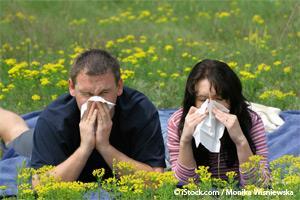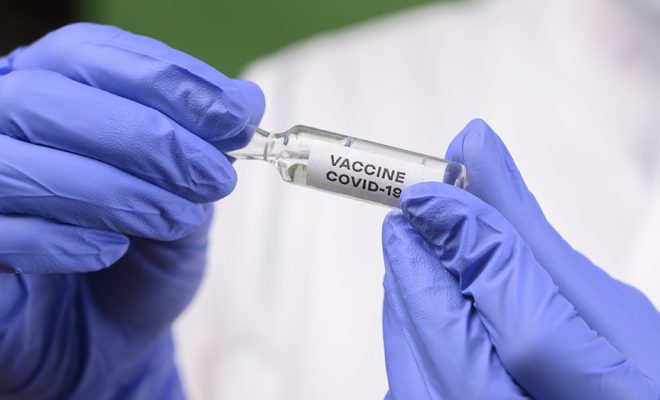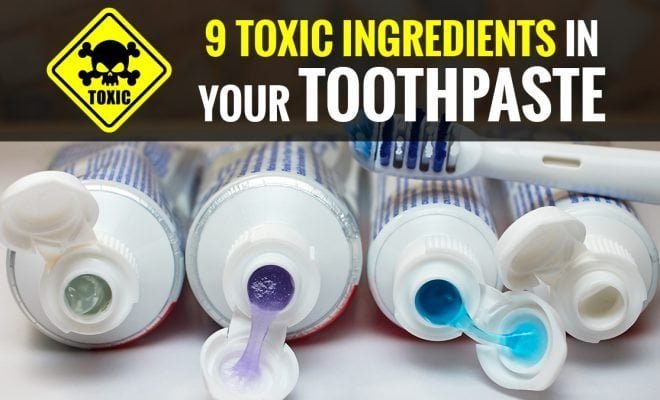5 Tactics for Surviving the Spring Allergy Season

In much of theU.S., spring allergies may begin as early as February and last until summer.Tree pollen is a common springtime allergen, although often people haveallergies to three or four species of trees and plants. Airborne mold sporesrepresent another common culprit.
Monitoringoutdoor pollen counts can be helpful, but you’ll only benefit from stayingindoors on high-count days if the elevated levels include pollens to whichyou’re allergic (allergy testing can help you determine your individualallergies).
A better bet isto be prepared to tackle your springtime allergies regardless of what the day’spollen count may be.
How Do Seasonal Allergies Develop?
Seasonalallergies, sometimes called hay fever, affect up to 8 percent of the U.S.population.1 They cause a number ofbothersome symptoms including sneezing, stuffy or runny nose, watery and itchyeyes, and itching in your nose, mouth or throat.
Allergies are your body’s reaction to particles that itconsiders foreign (allergens). The first time your body encounters an allergen,your plasma cells release immunoglobulin E (IgE), an antibody specific to thatallergen.
IgE attaches to the surface of your mast cells, which arefound in great numbers in your surface tissues, such as your skin and nasalmucous membranes, where they help mediate inflammatory responses. Mast cellsrelease a number of important chemical mediators, one of which is histamine.
The second time your body encounters a particular allergen,within a few minutes your mast cells become activated and release a powerfulcocktail of histamine, leukotrienes, and prostaglandins, which trigger theentire cascade of symptoms you associate with allergies.
The American College of Allergy, Asthma and Immunology(ACAAI) explained:2
“One of the marvels ofthe human body is that it can defend itself against harmful invaders such asviruses or bacteria. In some people, the body reacts to harmless substances suchas dust, mold or pollen by producing an antibody called immunoglobulin E (IgE).
When patients withone of the allergic diseases (such as rhinitis or asthma) are exposed to thesesubstances, the immune system then rallies its defenses, launching a host ofcomplex chemical weapons to attack and destroy the supposed enemy.
In the process, someunpleasant and, in extreme cases, life-threatening symptoms may be experienced.
… An allergicreaction may occur anywhere in the body, but usually appears in the skin, eyes,lining of the stomach, nose, sinuses, throat and lungs — places where specialimmune system cells are stationed to fight off invaders that are inhaled,swallowed or come in contact with the skin.”
Tips for Surviving SpringAllergy Season
If you’re tired ofsuffering through what should be oneof the most pleasant times of the year, here are some of the best survivalstrategies to add to your allergy-fighting arsenal:
1. Limit Pollen Exposure
To minimize your allergy symptoms, the ACAAI suggestsreducing your exposure to pollen by:3
- Avoidingclothing made of synthetic fabrics, as they can produce an electric charge whenrubbed that attracts and makes pollen stick to you. Better options includenatural fibers like cotton.
- Exercisingoutdoors before dawn, in the late afternoon, and/or early evening, as pollencounts are at the lowest at these times. Intense exercise may be best doneindoors, as your increased breathing rate could make you inhale more pollen.
- Wearinggloves and a mask when gardening. To filter pollen, wear a National Institutefor Occupational Safety and Health (NIOSH)-rated 95 filter mask. Also avoidtouching your eyes and when done be sure to take a shower and wash your clothes.
- Reducingyour exposure to indoor allergens may also help reduce spring allergy symptoms.
Toimprove your indoor air quality, regularly vacuum your home, includingfurniture, using a HEPA filter vacuum cleaner, leave shoes by the door to avoidtrekking dirt through the house, and use a dehumidifier and/or a HEPA filterair purifier.
2. Try Natural Remedies
Natureprovides allergy relief in a number of natural herbs and vitamins. You may wantto consider:
- Hot peppers:Hot chili peppers, horseradish, and hot mustards work as naturaldecongestants. In fact, a nasal spray containing capsaicin (derived fromhot peppers) significantly reduced nasal allergy symptoms in a 2009 study.4
- Quercetin:Quercetin is an antioxidant that belongs to a class of water-soluble plant substances called flavonoids.
Quercetin-rich foods (such as apples,berries, red grapes, red onions, capers and black tea) prevent histaminerelease — so they are “natural antihistamines.”
Quercetin is also available insupplement form — a typical dose for hay fever is between 200 and 400 milligrams(mg) per day.
- Butterbur (Petasites hybridus): Another natural antihistamine, butterbur was used to treat coughs and asthma asfar back as the 17th century.
Researchers have since identifiedthe compounds in butterbur that help reduce symptoms in asthma by inhibitingleukotrienes and histamines, which are responsible for symptom aggravation inasthma.5
In a German study, 40 percent ofpatients taking butterbur root extract were able to reduce their intake oftraditional asthma medications.6 A word of caution is needed, however.
Butterburis a member of the ragweed family, so if you are allergic to ragweed, marigold,daisy, or chrysanthemum, you should not use butterbur.
Also,the raw herb should not be usedbecause it contains substances called pyrrolizidine alkaloids that can be toxicto your liver and kidneys and may cause cancer. Commercial butterbur productshave had a lot of these alkaloids removed.
- Goldenseal (Hydrastis canadensis): Goldenseal may be helpful for seasonal allergies. Laboratory studies suggestthat berberine, the active ingredient in goldenseal, has antibacterial andimmune-enhancing properties.
- Eucalyptus oil:This pure essential oil can be healing to mucus membranes. You can apply a dropon a cotton ball and sniff it several times a day, add a few drops to water (orto a nebulizer, if you own one) for a steam treatment, or use a few drops inyour bath water.
- VitaminC: Vitamin C is another natural antihistamine.Naturopathic doctor Dr. Doni Wilson told the Huffington Post, “ … [Y]ou need to take 500 to 1,000 mg., three times aday to reduce symptoms.”7
- GreenTea: If you have cedar pollen allergies,you should know about a type of slightly fermented, organic Japanese green teacalled “Benifuuki.”
Thetea has been shown to strongly inhibit mast cell activation and histaminerelease, as well as relieve symptoms of runny nose and eye itching in peoplewith cedar pollen allergy.8
3. Nasal Irrigation
Using a neti pot (a small, teapot-like pot) is a simpletechnique to safely cleanse your sinuses of irritants, including allergens. Itinvolves pouring water into one nostril and allowing it to flow out the other.You can find detailed instructionsfor nasal irrigation here.
Be sure to avoid using tap water, as it could potentially becontaminated with brain-eating amoeba or other contaminants. Only use waterthat is distilled, sterilized, previously boiled or filtered using a filter with an absolute poresize of 1 micron or smaller.
4. Homeopathy
Homeopathicsolutions contain miniscule doses of plants, minerals, animal products, orother compounds that cause symptoms similar to what you are alreadyexperiencing.
Theremedies have been diluted many times over, and the idea is that the substance willstimulate your body’s own healing process. While research on homeopathy islimited, anecdotally many have found relief from allergy symptoms usinghomeopathic remedies.
5. Diet, Exercise and Stress Relief
Many people aren’t aware that lifestyle habits may influence yourallergy symptoms. “Healing and sealing” your gut has been shown to help alleviateallergy symptoms, and the key to this is eliminating inflammatory foods likegrains and processed foods and introducing healthier foods, including fermentedfoods, that will support a proper balance of bacteria in your gut.
Eatinga wholesome diet based on unprocessed, ideally organicand/or locally grown foods, including fermented foods, along with optimizingyour vitamin D levels and correcting your omega-3 to omega-6 ratio, will form thefoundation upon which your immune system can function in an optimal manner.
Interestingly, while we’re on the topic of diet, ifyou have tree pollen allergies, you should avoid avocados when the trees arepollinating to avoid exacerbating your symptoms. In the Huffington Post, MikeTringale, senior vice president of External Affairs for the Asthma and AllergyFoundation of America (AAFA), further explained the importance of a healthylifestyle for fighting allergies:9
“An allergic disordermeans you have a chronic disease of your immune system … Exercise can bolsteryour immune system, which means it can be a helpful strategy when you’refighting your allergies. Immunotherapy [like allergy shots] increase yourtolerance to a trigger, but your body will still produce antibodies to thoseallergens.”
When you’re healthy, your body will be able to tolerate more ofthe trigger before a reaction occurs. Even stress relief is important, as chronic stress weakens your immune system.Research shows that people with persistent emotional stress have more frequentallergy flare-ups, so be sure you’re tending to your emotional health.
The 15 Worst Cities for SpringAllergies
AAFA has releasedthe 2016 Spring Allergy Capitals, which provides insights into where people aremost affected by seasonal allergy symptoms.10 The report takes intoaccount not only pollen scores but also rates of allergy medication usage andthe number of board-certified allergists in the area. The 15 worst cities wereas follows:
- Jackson, Mississippi
- Memphis, Tennessee
- Syracuse, New York
- Louisville, Kentucky
- McAllen, Texas
- Wichita, Kansas
- Oklahoma City, Oklahoma
- Providence, Rhode Island
- Knoxville, Tennessee
- Buffalo, New York
- Dayton, Ohio
- Little Rock, Arkansas
- Columbia, South Carolina
- Richmond, Virginia
- Baton Rouge, Louisiana
Provocation Neutralization MayOffer Permanent Allergy Relief
Provocation neutralization(PN), which is taught by the American Academy of Environmental Medicine (AAEM),can be very effective for allergy relief. I was a member of the AAEM andadministered this treatment in my office when I was practicing. PN offers manyallergy sufferers permanent relief without adverse side effects. The successrate for this approach is about 80 to 90 percent, and you can receive thetreatment at home.
Theprovocation refers to “provoking a change” and neutralization refersto “neutralizing the reaction caused by provocation.” Duringprovocation neutralization, a small amount of allergen is injected under yourskin to produce a small bump called a “wheal” on the top layers ofyour skin, and then it is monitored for a reaction.
If you have apositive reaction, such as fatigue, headache, or a growth in the size of thewheal, then the allergen is neutralized with diluted injections or with dropsof the same allergen that go in your mouth.
If you are interested in pursuing PN,AAEM has a list of physicians and offices that are trained in this highlyeffective and recommended technique.11 It isimportant to remember that the PN program is in addition to, not a replacementfor, a comprehensive allergy recovery program and healthy lifestyle.








